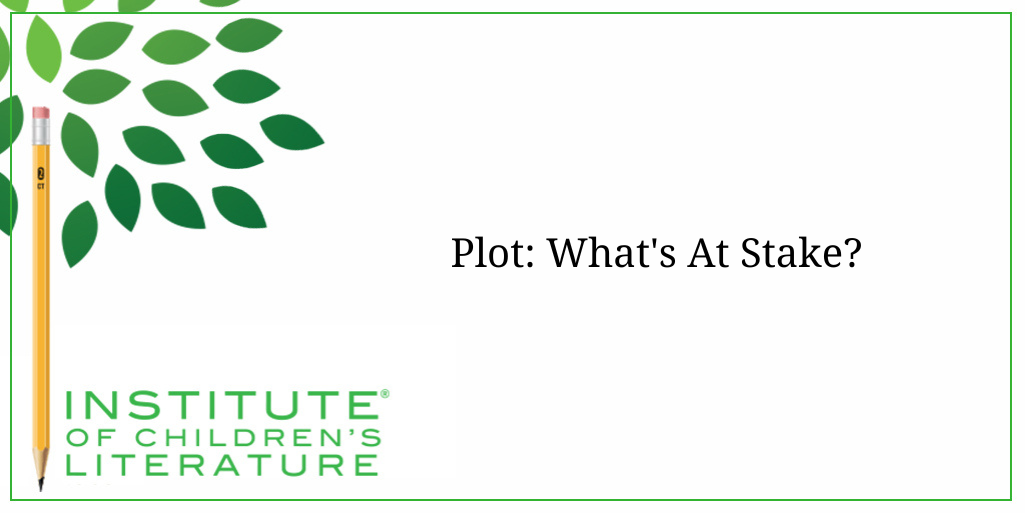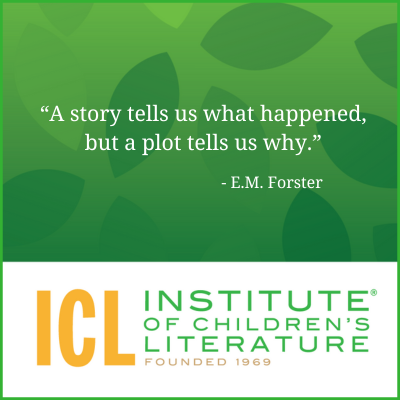
5 Ways Writers Can Prep for 2025 Goal Setting
Before we roll on to the new writing year, let’s harness our optimism for the blank slate before us and prepare for our 2025 Goal Setting just for writers.

According to most dictionaries, the plot is the story of a literary work. But simply giving a synonym doesn’t quite do the job of understanding what plot is. It is the series of actions, dialogue, and narrative that move the tale along. It is the pressure put on the characters to motivate them to act, because (most of the time) story is all about change. In a story, things are not the way they have always been. Something new arrives and applies pressure to the characters. And the characters react to that pressure to relieve it or to learn how to adapt to it. So pressure is key to plot, but what is story pressure?

These are fairly low stakes. But being able to text can be extremely important to a thirteen-year-old. Still, it’s hardly life or death. So the pressure matches what the parent wants to happen. The parent wants homework done so he puts something at stake. If a parent says, “If you text before you finish your homework, I’ll kill you,” the pressure is over the top making it unbelievable. So as plot pressure, a threat like that would be useless (much like it can be in real life).
Every character you create should have a ‘status quo’ setting, and you need to be aware of what it is. For instance, a character who is a perfectionist who hates to be wrong probably doesn’t need much, if any, pressure to get them to do their homework. They are motivated internally by who they are. So doing homework first is likely to be the normal setting for this character.
On the other hand, getting a character like that to skip school would require a lot of pressure. Something big would need to be at stake. Perhaps this is the character’s one chance at being popular. Perhaps the character is being invited to skip school by his secret crush. Perhaps they are skipping school because they need to do something incredibly important, something even more important to the character than always doing everything right.

Because characters are so different, sometimes you must put a lot at stake to get a group of characters to act, even though the high stakes are not quite necessary for everyone in the group. At all times you must keep all the characters in mind.
For an interesting story, you want to throw in obstacles that play against each of the characters, requiring the high stakes to keep them going forward. So, for instance, we may have a group of kids who are skipping school because they think one of their friends is going to do something dangerous. Or because they believe they know the solution to a dangerous mystery, but they need to uncover it because no one is taking their theory serious.
We give them that strong motivation, but one of the characters would have gone along anyway just for the joy of skipping school. For that character, I may throw in an action that requires that character to do something personally difficult and uncomfortable (perhaps requiring the character to confront a phobia, for instance). That’s when the original high stakes keep that particular character moving.
Sometimes in a funny story, the stakes turn out to be unreal. I wrote a story for young readers about a group of characters who get into a panic because one of them saw a spaceship, and they think they are about to be invaded. Only the character didn’t see a spaceship. He saw a pizza crust being spun so hard it spun right out the window. He spotted it just before it ended up sloppily hanging from a tree. But his actions were driven by a need to tell all his friends so they could do something to stay safe against the aliens. It was a strong motivation but ultimately based on a wrong conclusion about something seen.

My main character was impulsive and prone to jumping to conclusions. While preparing to deal with the aliens, the characters actually end up doing something important and helpful, so though the first character takes some good-natured ribbing, he’s also a hero by the end of the story. In that situation, what appeared to be at stake turned into what was really at stake. The real stakes didn’t motivate the action, but they did keep the story from being characters who accomplish nothing. Young readers really don’t tend to enjoy stories about characters who accomplish nothing.
It’s hard to maintain tension at the highest possible level. Readers get tension fatigue if you start the story with the highest possible stakes and then try to hold onto that for a whole novel. Two different things can happen. First, you can end up with no excuse for taking a breather (which we all need in stories with a lot of tension.)
Suppose I start my story with a group of kids being chased into a salvage yard by a killer with a sledgehammer. Those are top-line stakes. This killer is deadly. But that means you really can’t make the stakes any higher. What’s worse than a killer with a sledgehammer? I mean, sure, you could have the kids find out a meteor was hurtling toward earth and would wipe out their whole town, but would that feel like more at stake? In fact, death by meteor might feel like less a stake than being beaten by a sledgehammer.

Let’s say my characters have a missing friend. The friend was building a super cool thing out of parts he was swiping from the local salvage yard. My characters know the police think the friend ran away. His home life wasn’t great. And they’re all young teens. But they believe the disappearance is connected to the salvage yard somehow. Their friend had a crappy home life, sure, but he was focused on this thing he was building. It was for a contest that he believed he could win. And if he won, he would have money to go to college, space camp, or something he really wanted. They feel sure he wouldn’t have run away.
They also know the guy who runs the salvage yard is scary. So, what if something happened to their friend there? They have to try to find him. That’s a strong stake, but it has room to get stronger. And the early steps of the story will allow for opportunities to work on other plot points. Then, by the time we reach the killer with a sledgehammer section, my other plot work would be done, and I’d be ready for this. Then I can crank the stakes up to the highest level and get the kids running and hiding.
I’m often reminded of Knuffle Bunny, one of my all-time favorite picture books. A little girl loses her rather tattered bunny. She’s too young to speak, but she is devastated and communicates in the only way she can. The story has a happy ending, but it’s easy to dismiss the stakes as unimportant when you think about it. It’s just a toy and a rather ratty one at that. But somehow, it’s one many, many readers can relate to. We all have things that are personally important to us. And when those things are imperiled, the result is important.

All that to say, the plot stakes aren’t just something that exists. It’s something that exists in a very personal way. And you’ll need to prove them to us. This happens through what the characters are willing to do when under the pressure of the stakes. If the stakes are the end of the world as we know it, the character may even be willing to die for those stakes. But a character may be willing to die for a sibling or even a crush. It all has to do with the value to that character.
Part of setting the stakes in your story is knowing the character very well and picking ways of showing us that character and what that character values. A character who hates everyone may not be willing to do much even if the stakes are the end of the world. But the same character might be willing to run into traffic to save his dog—something that could seem to be a much lower stakes.
Stakes aren’t a static thing. They’re personal for the characters. They have value in motivating behavior and creating tension. They can change through the course of the story. And they are something every writer should keep in mind for every story.
When working on your current project, ask yourself, what is making your characters act the way they do? What’s at stake?
With over 100 books in publication, Jan Fields writes both chapter books for children and mystery novels for adults. She’s also known for a variety of experiences teaching writing, from one session SCBWI events to lengthier Highlights Foundation workshops to these blog posts for the Institute of Children’s Literature. As a former ICL instructor, Jan enjoys equipping writers for success in whatever way she can.

Before we roll on to the new writing year, let’s harness our optimism for the blank slate before us and prepare for our 2025 Goal Setting just for writers.

Writers can be thin-skinned when it comes to getting feedback on their work. Let’s look at 4 ways to positively deal with constructive criticism!

Rejection is part of the territory when it comes to being a writer. Today we offer reflection for writers to help redirect your efforts after a rejection.
1000 N. West Street #1200, Wilmington, DE 19801
© 2024 Direct Learning Systems, Inc. All rights reserved.
1000 N. West Street #1200, Wilmington, DE 19801
© 2024 Direct Learning Systems, Inc. All rights reserved.
1000 N. West Street #1200, Wilmington, DE 19801
© 2024 Direct Learning Systems, Inc. All rights reserved.
1000 N. West Street #1200, Wilmington, DE 19801
© 2024 Direct Learning Systems, Inc. All rights reserved.

1000 N. West Street #1200, Wilmington, DE 19801
© 2025 Direct Learning Systems, Inc. All rights reserved.

1000 N. West Street #1200, Wilmington, DE 19801
©2025 Direct Learning Systems, Inc. All rights reserved. Privacy Policy.
2 Comments